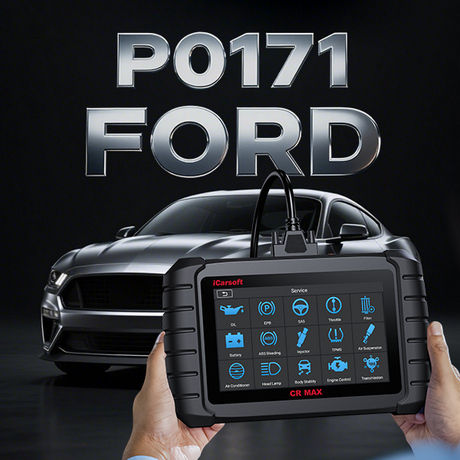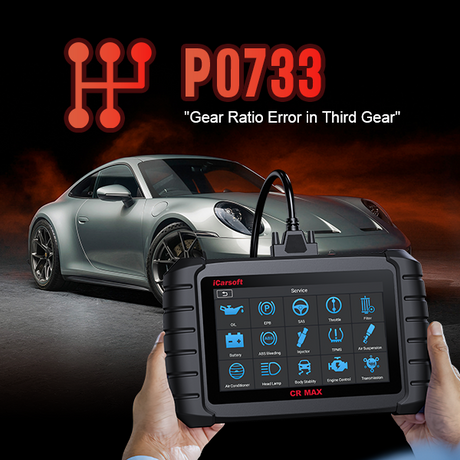P2181: Cooling System Performance Issue - Comprehensive Analysis and Practical Case Studies
In modern vehicles, the cooling system plays an essential role in maintaining optimal engine performance. The P2181 trouble code, a common OBD-II diagnostic code, signals a performance issue within the cooling system, especially in vehicles equipped with advanced engine management technology. This article offers a detailed examination of P2181, including its definition, causes, symptoms, diagnostic procedures, and solutions. Enriched with real-world case studies—such as issues in the Volkswagen Passat and other models—this guide provides practical insights for vehicle owners and technicians to effectively resolve this fault.
1. What is P2181?
P2181 is an OBD-II diagnostic trouble code (DTC) labeled "Cooling System Performance Issue." It is logged by the Engine Control Module (ECM) when the Engine Coolant Temperature (ECT) fails to reach its expected operating range within a designated time or displays irregular fluctuations.
How the Cooling System Works
The cooling system circulates coolant to absorb engine heat and releases it via the radiator, keeping the engine at an ideal temperature (typically 80-100°C). The ECT sensor tracks coolant temperature and relays this data to the ECM, which adjusts fuel injection and ignition timing accordingly. A malfunction in this system prompts the ECM to record the P2181 code.
Common Trigger Conditions
- Coolant temperature anomalies (excessively high or low).
- Malfunctioning cooling system components.
- Air trapped in the system or coolant leaks.

2. Potential Causes and Specific Issues of P2181
P2181 can stem from multiple sources. Below is a detailed list of common causes, paired with real-world examples:
-
(1) Thermostat Failure
Issue: A stuck-open or stuck-closed thermostat disrupts coolant flow.
Example: In a 2016 Volkswagen Passat, a stuck-open thermostat caused prolonged low engine temperatures, triggering P2181.
Cause: Wear or failure of the thermostat’s internal seals. -
(2) Coolant Temperature Sensor (ECT) Issues
Issue: The ECT sensor delivers inaccurate readings, confusing the ECM.
Example: A 2017 Hyundai Sonata exhibited a corroded ECT sensor circuit, locking the temperature reading at an abnormal value and activating P2181.
Cause: Sensor degradation or wiring problems. -
(3) Cooling System Leaks
Issue: Loss of coolant compromises system pressure and cooling capacity.
Example: A 2014 Jeep Grand Cherokee suffered a radiator leak at its base, reducing coolant levels and triggering P2181.
Cause: Radiator wear or physical damage. -
(4) Water Pump Failure
Issue: A malfunctioning water pump hinders coolant circulation, reducing heat dissipation.
Example: A 2015 Subaru Outback had a damaged water pump impeller, limiting coolant flow and causing P2181.
Cause: Worn bearings or broken impeller components. -
(5) Cooling Fan Malfunction
Issue: A non-functional or erratic cooling fan fails to dissipate heat effectively.
Example: A 2013 BMW 3 Series (F30) experienced a burnt-out fan motor, leading to overheating and P2181.
Cause: Aging motor or faulty control module.
3. Symptoms of P2181
Symptoms of P2181 depend on the underlying issue. Here are the most common signs and their associated causes:
-
Engine Overheating
Symptom: The temperature gauge climbs into the red zone, often with a warning light.
Cause: Obstructed coolant flow or poor heat dissipation. -
Engine Running Too Cold
Symptom: The temperature gauge lingers in the low range, accompanied by higher fuel use.
Cause: A thermostat stuck open, allowing constant coolant circulation. -
Poor Cabin Heating
Symptom: The heater produces cold or tepid air.
Cause: Inadequate coolant temperature. -
Reduced Engine Power
Symptom: Sluggish acceleration and weak engine response.
Cause: ECM adjustments based on faulty temperature data.
4. Vehicles Prone to P2181 and Case Studies
P2181 frequently appears in vehicles with electronically managed cooling systems. Below are notable examples:
-
Volkswagen Passat (2012-2018)
Issue: Thermostat stuck open.
Symptom: Delayed engine warm-up and elevated fuel consumption. -
Hyundai Sonata (2015-2019)
Issue: Erratic ECT sensor readings.
Symptom: Unstable temperature gauge and overheating. -
Jeep Grand Cherokee (2011-2016)
Issue: Radiator leak.
Symptom: Declining coolant levels and temperature irregularities. -
Subaru Outback (2014-2018)
Issue: Water pump failure.
Symptom: Elevated engine temperatures with minor unusual noises. -
BMW 3 Series (F30, 2012-2016)
Issue: Cooling fan failure.
Symptom: Overheating during idle.

5. Steps to Diagnose P2181
Diagnosing P2181 requires a methodical process. Follow these steps:
-
Step 1: Read Trouble Codes and Data Stream
Tool: iCarsoft CR MAX or equivalent OBD-II scanner.
Action: Connect to the OBD-II port, retrieve P2181 and related codes, and review ECT live data.
Key Data:- Coolant temperature: Should stabilize at 80-100°C.
- Compare with ambient temperature to verify sensor accuracy.
-
Step 2: Visual Inspection
Checkpoints:- Coolant level: Below minimum mark.
- Hoses/radiator: Evidence of leaks or wear.
- Fan operation: Activates at high temperatures.
-
Step 3: Test the Thermostat
Tool: Infrared thermometer.
Action:- Measure upper and lower hose temperatures: Should align when the thermostat opens.
- Confirm opening temperature: Typically 85-90°C.
-
Step 4: Check the ECT Sensor
Action:- Test resistance: Should vary with temperature (consult vehicle manual).
- Inspect wiring: Check for shorts or breaks.
-
Step 5: Verify the Water Pump and Fan
Action:- Inspect the water pump: Look for leaks or unusual sounds.
- Test the fan: Activate manually to ensure it runs.
6. Solutions and Implementation
Apply these repairs based on diagnostic findings:
-
Replace the Thermostat
Part: VW OEM thermostat (~$60).
Steps: Drain coolant, install new thermostat, refill system.
Example: The Passat’s temperature normalized post-replacement. -
Replace the ECT Sensor
Part: Hyundai OEM sensor (~$35).
Example: The Sonata’s readings stabilized after replacement. -
Repair Leaks
Method: Replace damaged radiator or hoses.
Example: The Grand Cherokee’s issue resolved with a new radiator. -
Replace the Water Pump
Part: Subaru OEM water pump (~$180).
Example: The Outback regained normal coolant flow. -
Repair the Fan System
Part: BMW fan motor (~$200).
Example: The 3 Series cooled properly after motor replacement.

7. Repair Costs and Precautions
- Thermostat: $100-$250.
- ECT Sensor: $50-$120.
- Water Pump: $250-$600.
- Fan System: $150-$400.
- Leak Repair: $100-$350.
Precautions
- Reset trouble codes using a scanner after repairs.
- Use manufacturer-specified coolant and bleed the system to eliminate air pockets.
 Learn More about Scan Tool
Learn More about Scan Tool
8. Preventive Measures
- Replace coolant every 2 years or 40,000 km.
- Routinely inspect the cooling system for leaks.
- Monitor the temperature gauge for irregularities.
- Avoid substandard coolant products.

Summary
The P2181 trouble code highlights a cooling system performance issue, often linked to a defective thermostat, ECT sensor, water pump, or cooling fan. Through detailed case studies—like the thermostat failure in the Volkswagen Passat or the fan issue in the BMW 3 Series—and step-by-step diagnostics, this guide equips readers to pinpoint and fix the problem. Addressing P2181 promptly prevents serious engine damage. For thorough diagnostics, tools like the iCarsoft CR MAX from www.icarsoft-us.com can help restore the vehicle to peak performance.
Learn More about CR MAX












